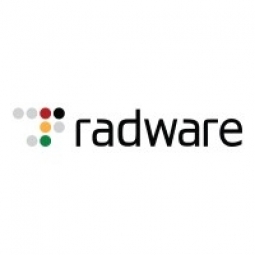Customer Company Size
Large Corporate
Region
- America
Country
- United States
Product
- Radware FastView
Tech Stack
- Cloud-based
Implementation Scale
- Enterprise-wide Deployment
Impact Metrics
- Revenue Growth
- Customer Satisfaction
Technology Category
- Platform as a Service (PaaS) - Connectivity Platforms
Applicable Industries
- Automotive
- Retail
Applicable Functions
- Sales & Marketing
Use Cases
- Supply Chain Visibility
Services
- Cloud Planning, Design & Implementation Services
About The Customer
AutoAnything.com is one of the largest and fastest growing online retailers of custom automotive accessories and performance parts. With over four million items in its inventory, the website delivers dynamic applications such as live chat, a recommendation engine, and site personalization, all of which are potential performance zappers. By developing proprietary data and software applications, partnering with best-of-breed outsourced solutions, and providing top-notch customer service, AutoAnything has created an award-winning website that is one of the top online sources for purchasing auto accessories.
The Challenge
In the fall of 2009, AutoAnything was preparing for Black Friday. They aimed to create a premium shopping experience that would minimize cart abandonment and yield high conversion rates. To achieve this, they needed to create an image-rich website with fast-loading pages and reliable performance. Despite already using a content distribution network (CDN), AutoAnything knew they could be even faster. The site’s home page took up to 10 seconds to load, which was far too slow by the performance standards of the time. With a small engineering team and site traffic of over 2 million unique visitors each month, it was crucial that the company partner with a vendor who could deliver easy implementation.
The Solution
After careful research, AutoAnything chose to implement the cloud-based Radware FastView. AutoAnything conducted a set of tests to identify FastView’s impact on key management metrics: conversion, cart size, cart abandonment and revenue. During the test period, 50% of AutoAnything’s visitors received website content that was accelerated by FastView, while the other 50% of website visitors received content served from AutoAnything’s centralized servers and existing CDN. FastView was implemented without changing any code or touching the site’s servers.
Operational Impact
Quantitative Benefit

Case Study missing?
Start adding your own!
Register with your work email and create a new case study profile for your business.
Related Case Studies.

Case Study
Integral Plant Maintenance
Mercedes-Benz and his partner GAZ chose Siemens to be its maintenance partner at a new engine plant in Yaroslavl, Russia. The new plant offers a capacity to manufacture diesel engines for the Russian market, for locally produced Sprinter Classic. In addition to engines for the local market, the Yaroslavl plant will also produce spare parts. Mercedes-Benz Russia and his partner needed a service partner in order to ensure the operation of these lines in a maintenance partnership arrangement. The challenges included coordinating the entire maintenance management operation, in particular inspections, corrective and predictive maintenance activities, and the optimizing spare parts management. Siemens developed a customized maintenance solution that includes all electronic and mechanical maintenance activities (Integral Plant Maintenance).

Case Study
Improving Production Line Efficiency with Ethernet Micro RTU Controller
Moxa was asked to provide a connectivity solution for one of the world's leading cosmetics companies. This multinational corporation, with retail presence in 130 countries, 23 global braches, and over 66,000 employees, sought to improve the efficiency of their production process by migrating from manual monitoring to an automatic productivity monitoring system. The production line was being monitored by ABB Real-TPI, a factory information system that offers data collection and analysis to improve plant efficiency. Due to software limitations, the customer needed an OPC server and a corresponding I/O solution to collect data from additional sensor devices for the Real-TPI system. The goal is to enable the factory information system to more thoroughly collect data from every corner of the production line. This will improve its ability to measure Overall Equipment Effectiveness (OEE) and translate into increased production efficiencies. System Requirements • Instant status updates while still consuming minimal bandwidth to relieve strain on limited factory networks • Interoperable with ABB Real-TPI • Small form factor appropriate for deployment where space is scarce • Remote software management and configuration to simplify operations











